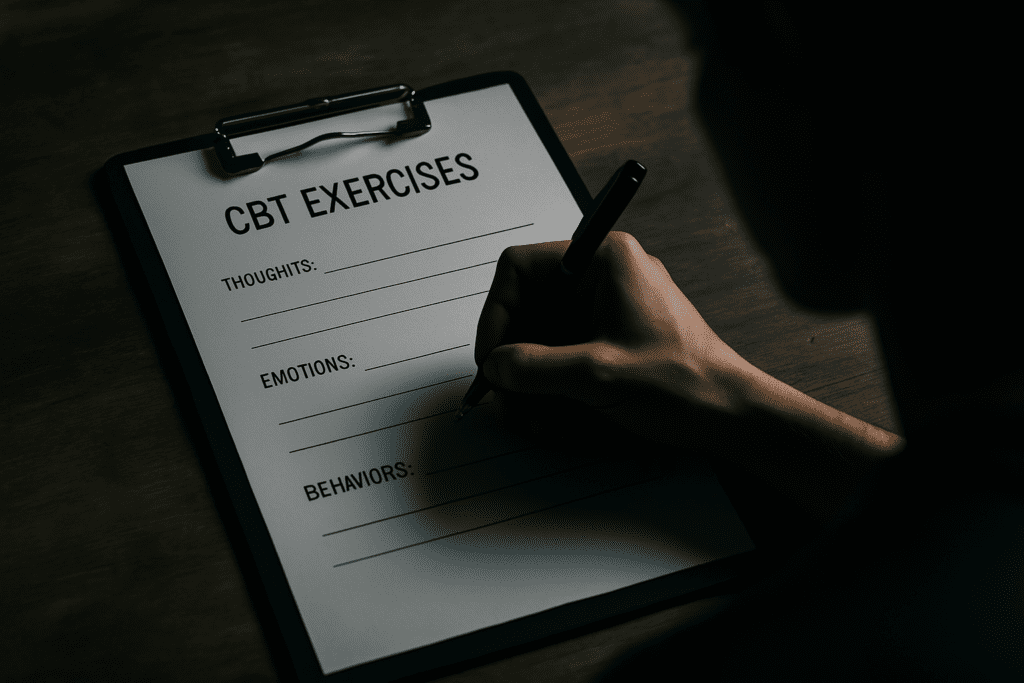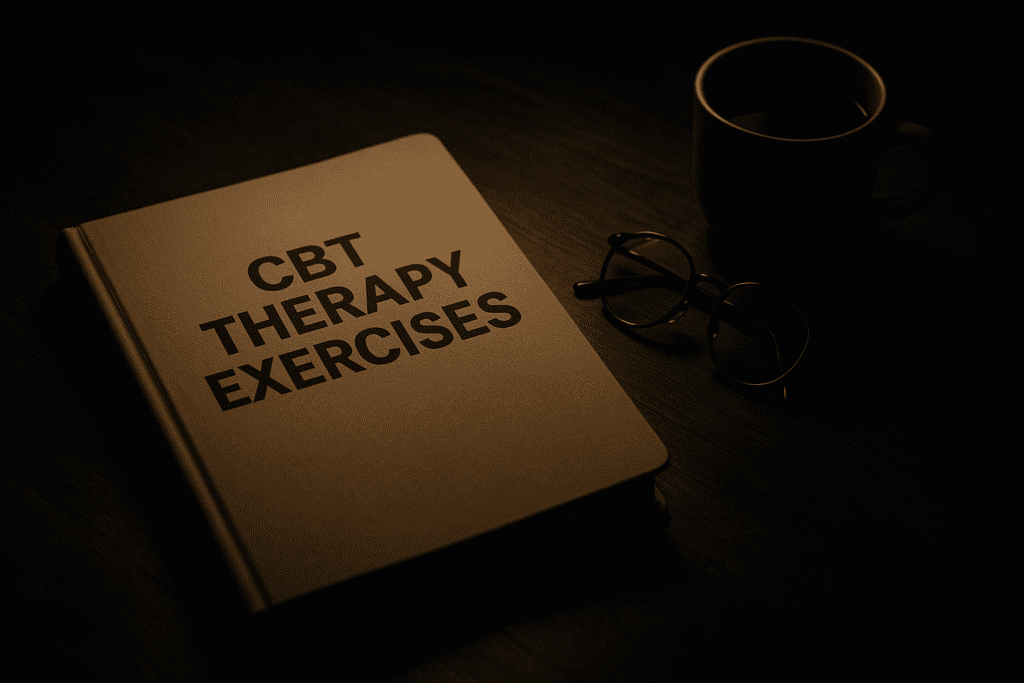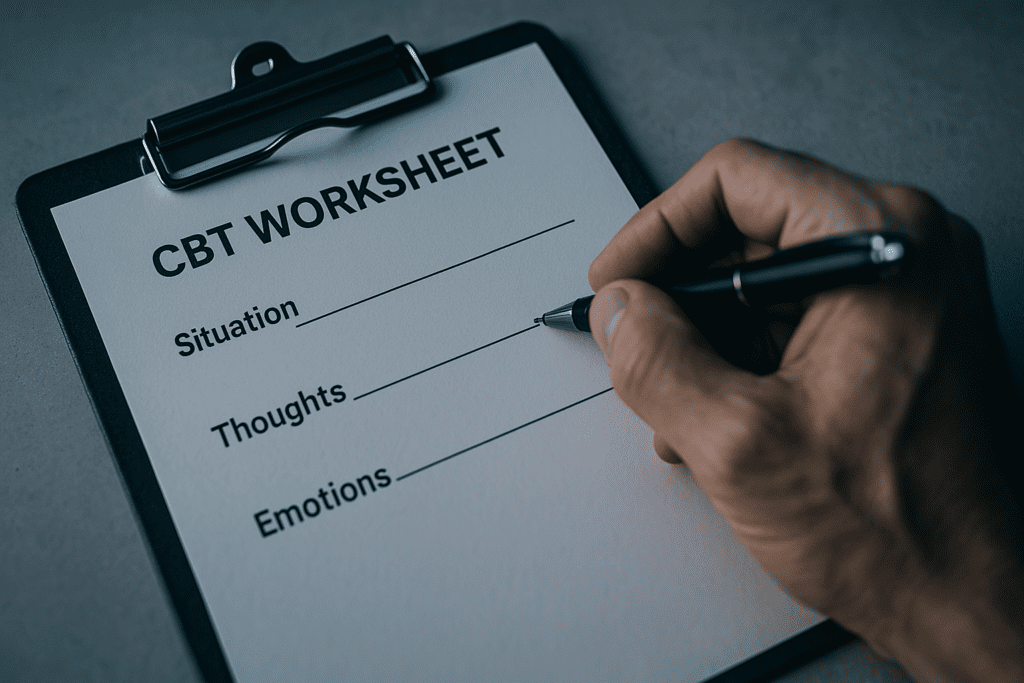Understanding the Foundations of CBT: How Cognitive Behavioral Therapy Works
Cognitive Behavioral Therapy (CBT) stands as one of the most empirically supported forms of psychotherapy, widely endorsed by clinicians and researchers alike. At its core, CBT is rooted in the idea that our thoughts, emotions, and behaviors are intricately connected. When negative or distorted thought patterns dominate our internal dialogue, they can trigger maladaptive behaviors and emotional distress. By identifying and restructuring these cognitive distortions, CBT empowers individuals to develop healthier thought processes and behavioral responses.
You may also like: How Does CBT Work to Improve Relationships and Communication? Science-Backed Techniques for Getting Along with Others
CBT operates on a structured, goal-oriented framework that typically involves a limited number of sessions. It is designed to be practical and focused, targeting specific issues such as anxiety, depression, PTSD, and even sleep disorders. The therapy emphasizes the present moment rather than delving deeply into childhood experiences. This future-focused nature makes CBT particularly effective in offering tangible tools and coping strategies that clients can apply in their daily lives. One of the key strengths of CBT lies in its adaptability—techniques can be customized to suit individual needs, making it accessible and relevant for diverse populations.
Crucially, CBT is not a passive process. Clients are encouraged to take an active role in their treatment by engaging in homework assignments, practicing newly learned skills, and reflecting on their progress between sessions. This participatory model fosters a sense of ownership and empowerment, which contributes to its long-term effectiveness. Tools such as cognitive behavioral therapy worksheets and structured CBT PDF guides are often used to support this process, enhancing both comprehension and engagement.
Practical CBT Therapy Exercises to Reshape Thought Patterns
Engaging in CBT therapy exercises is central to transforming unhelpful cognitive habits into constructive and adaptive ways of thinking. These exercises typically revolve around identifying automatic thoughts, challenging their validity, and replacing them with more balanced alternatives. For instance, thought records are commonly used to capture real-time reflections about distressing events. By dissecting the situation, emotions, automatic thoughts, and evidence for or against those thoughts, individuals learn to differentiate between perception and reality.
Cognitive restructuring is another fundamental CBT exercise. Through the use of a cognitive restructuring worksheet, individuals can systematically deconstruct irrational beliefs. This method guides users to explore the consequences of their thoughts, identify cognitive distortions such as catastrophizing or overgeneralization, and practice reframing their perspectives. This technique is especially beneficial for those dealing with anxiety or depressive disorders, where distorted thinking often fuels emotional discomfort.
Behavioral experiments are also commonly incorporated into CBT exercises to test the validity of irrational thoughts. For example, someone with social anxiety might be encouraged to initiate a casual conversation with a colleague to evaluate whether their fear of judgment is accurate. By confronting these fears in real-life scenarios, individuals can collect evidence that contradicts their automatic assumptions. Many CBT worksheets and activity sheets are designed to facilitate this experiential learning process.
Therapists often encourage clients to keep mood and behavior journals, which help identify patterns and triggers in their daily experiences. These journals can reveal recurring thought distortions or behavioral tendencies that might otherwise go unnoticed. When paired with a structured cognitive behavioral therapy workbook, clients gain a cohesive system for tracking progress and building insight. The integration of structured CBT PDF resources enhances consistency and allows individuals to continue their practice independently outside of therapy.
Leveraging CBT Worksheets to Deepen Self-Awareness and Insight
CBT worksheets play a pivotal role in bridging the gap between theoretical understanding and practical application. These tools help individuals externalize their thoughts and visualize their internal processes more clearly. By writing down their thoughts, behaviors, and emotional reactions, clients can step back and objectively analyze patterns that might otherwise feel overwhelming or elusive. This form of self-monitoring fosters metacognition—the ability to think about one’s own thinking—which is key to long-term change.
One commonly used worksheet in CBT is the “ABC model,” which stands for Activating event, Beliefs, and Consequences. This format helps users identify how their beliefs influence emotional and behavioral outcomes. By separating an event from the belief attached to it, clients can gain insight into how much power their interpretation holds. This realization often marks the beginning of cognitive flexibility—the capacity to entertain multiple perspectives.
Another effective CBT activity involves the use of daily thought logs, which prompt individuals to record situations that triggered strong emotions, the automatic thoughts that arose, and the resulting feelings or behaviors. These logs not only highlight recurring patterns but also serve as a record of growth over time. Many therapists recommend using CBT activity sheets to reinforce this practice, especially when treating generalized anxiety or depressive disorders.
CBT worksheets can also be tailored for specific scenarios, such as a CBT activity for following rules in a structured environment. This is especially useful for individuals with ADHD or behavioral challenges, helping them reflect on the reasons behind rules and their emotional responses to them. Similarly, a CBT activity for the last session of therapy often involves summarizing progress, identifying remaining challenges, and planning for the future—all of which can be captured effectively through personalized CBT worksheet templates.
The Value of CBT PDFs and Workbooks in Daily Practice
In an increasingly digital world, CBT PDF guides and therapy workbooks have emerged as indispensable tools for therapists and clients alike. These resources offer structured content that can be easily accessed, printed, and used at any time, allowing for greater flexibility and continuity between sessions. A well-designed cognitive behavioral therapy workbook typically includes a comprehensive introduction to CBT principles, followed by a progressive series of exercises that build on one another.
CBT PDFs often include a list of CBT techniques and worksheets that support various aspects of therapy, from cognitive restructuring to behavioral activation. Having access to a list of CBT techniques PDF allows clients to explore multiple approaches and identify the ones that resonate most with their experiences. This empowers individuals to take ownership of their mental health journey, enhancing their commitment to practice and follow-through.
One of the key advantages of CBT PDF materials is their portability and ease of use. Clients can complete exercises at their own pace, revisit previous sections for reinforcement, or share insights with their therapist during sessions. This format also makes it easier to engage in CBT tech for anxiety PDF resources that are specifically designed to target anxious thought cycles. These targeted tools often provide step-by-step instructions, reflection prompts, and real-life examples to make the content relatable and actionable.
Furthermore, the visual structure of CBT PDF guides helps organize complex concepts into digestible segments. Charts, diagrams, and fillable forms guide users through the cognitive-behavioral process, reducing the cognitive load often associated with introspective work. The integration of multimedia elements within digital CBT guides, such as hyperlinks to videos or audio exercises, can also deepen understanding and engagement. This multimodal approach supports diverse learning styles, making cognitive behavioral therapy PDF resources more inclusive and effective.

Personalizing CBT Strategies for Anxiety, Depression, and More
While CBT offers a universally applicable framework, its true power lies in personalization. Tailoring CBT exercises to specific conditions such as anxiety, depression, or trauma significantly enhances their effectiveness. For instance, cognitive behavioral worksheets for anxiety often focus on identifying and challenging irrational fears, while worksheets for depression may emphasize behavioral activation and motivation tracking. This customization ensures that the therapy remains relevant and impactful.
CBT for anxiety often incorporates exposure-based techniques, helping clients gradually face feared situations and reduce avoidance behaviors. Paired with a CBT format that includes pre-exposure preparation and post-exposure reflection, these exercises can yield profound insights and lasting change. CBT tech for anxiety PDF tools are particularly helpful in these cases, offering structured plans for conducting exposure exercises safely and effectively.
For individuals struggling with depression, CBT activities often center on increasing engagement in rewarding activities and breaking cycles of negative rumination. A cognitive behavioral therapy workbook might include sections for setting daily goals, rating mood, and recording small victories. These activities build momentum and foster a sense of agency, which can be crucial during episodes of low motivation or hopelessness.
Clients with co-occurring conditions, such as anxiety and ADHD, can also benefit from CBT activity sheets that integrate multiple focus areas. For example, a CBT activity for following rules can be adapted to teach impulse control and enhance executive functioning. Therapists may use specific formats, such as color-coded CBT worksheets, to help individuals organize their thoughts and improve focus. This level of customization is made easier through the use of digital CBT PDF tools that allow therapists to modify templates based on individual needs.
The Final Session: Reflecting, Planning, and Sustaining Progress
Concluding a course of CBT is an important milestone, often marked by reflection and forward planning. A CBT activity for the last session typically includes a comprehensive review of progress made, key insights gained, and strategies for maintaining improvements. Clients are encouraged to revisit their original goals, assess how far they have come, and identify any lingering challenges that might require additional attention.
Therapists may guide clients through creating a personalized relapse prevention plan, using CBT worksheets to document coping strategies, early warning signs, and action steps. This proactive approach equips individuals with the tools needed to navigate future stressors confidently. A well-structured cognitive behavioral therapy PDF can serve as a lasting resource, enabling clients to refresh their skills whenever needed.
Celebrating progress is a critical component of the final CBT session. Clients are invited to reflect on their growth, not just in terms of symptom reduction, but in the development of resilience, self-awareness, and emotional intelligence. CBT activity sheets designed for this purpose often include prompts for self-affirmation, gratitude, and envisioning future goals. These positive reflections help solidify change and reinforce a growth mindset.
Importantly, the conclusion of therapy does not signal the end of learning. Many individuals choose to continue using CBT workbooks and digital CBT PDF resources as part of their ongoing self-care. These materials act as companions in the continued journey toward mental well-being, offering structure, support, and inspiration even after therapy ends. By internalizing the principles of CBT and integrating them into everyday life, individuals can sustain their progress and navigate future challenges with greater confidence and skill.
Empowering Mental Health with CBT: A Lasting Path Forward
Mastering CBT therapy exercises requires commitment, curiosity, and compassion for oneself. Whether working through a structured cognitive behavioral therapy workbook, engaging with CBT worksheets, or utilizing digital CBT PDF guides, the process of reshaping thought patterns and behaviors is both transformative and empowering. These tools help illuminate the often-unseen dynamics of the mind, giving individuals the clarity and control needed to foster long-term well-being.
By integrating personalized CBT activity sheets, structured exercises, and expert-backed strategies, clients can create a customized approach to mental health that evolves with their needs. The accessibility of resources such as the list of CBT techniques PDF and targeted CBT tech for anxiety PDF materials ensures that support remains within reach, no matter where someone is in their journey.

Frequently Asked Questions: Mastering CBT Therapy Exercises
1. How can CBT worksheets help uncover emotional blind spots?
CBT worksheets are more than just organizational tools; they act as cognitive mirrors that reveal the underlying narratives we often overlook. By prompting users to detail their thoughts, emotions, and responses, these worksheets make unconscious patterns visible. For instance, many individuals are unaware of how often they engage in all-or-nothing thinking or catastrophizing until they use a structured cognitive behavioral therapy worksheet. Through regular use of CBT worksheets, clients gain insight into emotional blind spots—areas of distress that might be impacting decisions and relationships. When paired with a digital CBT PDF or workbook, these tools enhance emotional literacy and support more mindful, intentional decision-making.
2. What makes a CBT activity for following rules effective for children and teens?
Designing a CBT activity for following rules in younger populations requires creativity and relevance. Worksheets and CBT activity sheets that incorporate relatable scenarios—like school settings or family dynamics—are more likely to resonate with children and teens. An effective CBT format in this context might involve role-playing exercises, journaling, or fill-in-the-blank stories that explore cause-and-effect relationships. The use of colorful, interactive CBT PDFs helps capture attention while reinforcing behavioral principles. When integrated into a cognitive behavioral therapy workbook, these activities foster both understanding and application of rule-based reasoning, particularly in youth with oppositional or impulsive tendencies.
3. How do CBT therapy exercises evolve over the course of treatment?
CBT therapy exercises are designed to be progressive, shifting in complexity and focus as clients gain greater insight. Early sessions often emphasize foundational skills like identifying cognitive distortions, typically using a cognitive restructuring worksheet. As treatment advances, CBT exercises incorporate more challenging components such as behavioral experiments and exposure hierarchies. Clients may transition from generic CBT worksheets to personalized CBT activity sheets that address specific life goals or emotional triggers. By the time therapy reaches its final sessions, a comprehensive cognitive behavioral therapy PDF guide may be used to synthesize learned strategies into a sustainable self-care routine.
4. Can cognitive behavioral worksheets for anxiety be adapted for social or performance anxiety?
Absolutely. Cognitive behavioral worksheets for anxiety are highly adaptable and can be tailored for subtypes such as social or performance anxiety. For individuals who fear public speaking or social interactions, these worksheets often include sections to anticipate feared outcomes, rate their likelihood, and test them through gradual exposure. Using a CBT tech for anxiety PDF, therapists can customize worksheets with prompts specific to upcoming social events or performance scenarios. Combining this approach with mindfulness-based CBT activity sheets can help reduce anticipatory anxiety and increase situational confidence. When adapted properly, these worksheets provide a roadmap for confronting and reframing socially driven fears.
5. What distinguishes a high-quality cognitive behavioral therapy workbook?
A well-crafted cognitive behavioral therapy workbook goes beyond checklists and templates—it integrates theory, practice, and reflection. High-quality workbooks include psychoeducational content that explains CBT principles alongside a variety of exercises for different emotional challenges. They are organized in a CBT format that facilitates incremental learning, starting with thought awareness and advancing toward behavior change. The inclusion of self-assessment tools, progress trackers, and downloadable CBT PDFs enhances usability and personalization. Moreover, expert-backed workbooks often feature a curated list of CBT techniques PDF guides, allowing users to access a broad toolkit tailored to their specific mental health needs.
6. How can CBT activity sheets be used to support workplace mental health?
CBT activity sheets can be a discreet yet powerful tool for improving emotional regulation in professional settings. By helping employees identify stress triggers, cognitive distortions, and maladaptive reactions, these sheets promote self-awareness and emotional intelligence. Employers can integrate CBT worksheets into wellness initiatives or stress management programs without requiring formal therapy. A tailored CBT guide might include exercises for managing imposter syndrome, perfectionism, or conflict resolution—all common workplace concerns. Digital CBT PDF resources offer additional flexibility, making it easy to complete activities during breaks or between meetings.
7. Why are CBT PDFs particularly useful for telehealth and self-guided therapy?
The rise of telehealth has made CBT PDFs essential for bridging physical distance in therapy. These digital formats allow therapists to send customized worksheets, including cognitive restructuring worksheets or full CBT workbooks, directly to clients for at-home completion. A list of CBT techniques PDF provides a structured foundation for self-guided learning, enabling clients to revisit concepts as needed. The interactivity of some CBT tech for anxiety PDFs—such as clickable checklists or embedded videos—enhances the virtual therapeutic experience. Whether used independently or as a supplement to virtual sessions, CBT PDFs empower clients to take a more active role in their healing journey.
8. What role does a CBT activity for the last session play in long-term success?
A thoughtfully designed CBT activity for the last session can be pivotal in consolidating therapeutic gains. This final exercise often includes reflection on personal growth, development of a relapse prevention plan, and reinforcement of learned coping strategies. Clients may complete a composite worksheet that summarizes their journey, highlighting both challenges and triumphs. Incorporating elements from a cognitive behavioral therapy PDF guide, such as future goal setting or gratitude exercises, fosters continued growth beyond formal sessions. The emotional closure provided by this final CBT activity sheet can increase adherence to post-therapy routines and reduce the risk of regression.
9. How can individuals maximize the effectiveness of a CBT guide outside of clinical settings?
To make the most of a CBT guide outside the therapist’s office, consistency and self-reflection are key. Users should set a structured time each day or week to engage with their cognitive behavioral worksheets, treating them like mental workouts. Supplementing a standard CBT PDF with real-life journaling, goal tracking, or mindfulness practices can deepen the experience. Personalized adaptations—such as combining a cognitive restructuring worksheet with visualizations or affirmations—can enhance retention and emotional impact. For best results, users should regularly revisit their list of CBT techniques PDF to refine their approach based on evolving needs.
10. What are some emerging trends in CBT that enhance traditional workbook approaches?
Modern innovations in CBT are expanding the boundaries of traditional workbook use. For example, mobile apps now integrate CBT exercises into daily routines through push notifications and gamified tasks. Many of these platforms offer access to downloadable CBT PDFs, interactive cognitive behavioral therapy exercises, and real-time symptom tracking. AI-driven platforms are beginning to personalize CBT activity sheets based on user input, creating a more responsive therapeutic experience. Additionally, emerging research supports blending somatic techniques with CBT format approaches to address mind-body connections. These developments represent the future of cognitive behavioral therapy—one that is adaptive, accessible, and grounded in evidence-based practice.

Ultimately, CBT is more than just a therapy model—it is a life skill. Its principles can be revisited and reapplied as circumstances change, challenges arise, or new goals emerge. With the right tools and mindset, the benefits of CBT therapy exercises extend far beyond the therapy room, offering a sustainable, science-backed pathway to greater emotional resilience, clarity, and peace of mind. As mental health continues to gain recognition as a vital aspect of overall wellness, the role of structured, evidence-based approaches like CBT cannot be overstated. With access to CBT worksheets, CBT PDF resources, and cognitive behavioral therapy workbooks, individuals are equipped to navigate life’s complexities with greater self-awareness and psychological strength. Whether addressing anxiety, depression, or simply striving for emotional balance, mastering CBT therapy exercises offers a practical, enduring solution. The tools and techniques learned through CBT are not just therapeutic—they are transformative, offering lifelong value for those committed to their personal growth.
behavioral therapy tools, coping strategies for anxiety, mental health workbooks, emotional regulation techniques, therapy activities for adults, self-help exercises for stress, structured therapy techniques, psychological resilience building, cognitive distortion correction, anxiety self-management tools, guided therapy exercises, mindfulness in cognitive therapy, therapeutic journaling prompts, stress reduction plans, mental wellness activities, personalized therapy strategies, digital mental health resources, emotional self-awareness practices, trauma-informed therapy methods, executive functioning support exercises
Further Reading:
CBT Worksheets | Cognitive Behavioral Therapy Exercises
A Therapist’s Guide to Brief Cognitive Behavioral Therapy
Cognitive-Behavioral Therapy (CBT) Basic Group for Anxiety.
Disclaimer
The information contained in this article is provided for general informational purposes only and is not intended to serve as medical, legal, or professional advice. While Health11News strives to present accurate, up-to-date, and reliable content, no warranty or guarantee, expressed or implied, is made regarding the completeness, accuracy, or adequacy of the information provided. Readers are strongly advised to seek the guidance of a qualified healthcare provider or other relevant professionals before acting on any information contained in this article. Health11News, its authors, editors, and contributors expressly disclaim any liability for any damages, losses, or consequences arising directly or indirectly from the use, interpretation, or reliance on any information presented herein. The views and opinions expressed in this article are those of the author(s) and do not necessarily reflect the official policies or positions of Health11News.


